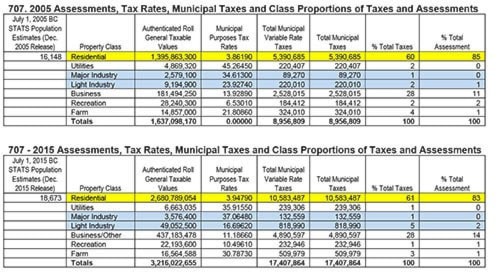Pitt Meadows has doubled the amount of tax revenue it takes in over the past decade, but is spending money as fast as it comes in.
While the city’s population has grown by a couple thousand people, its total tax take has risen from $8.9 million to $17.4 million from 2005 to 2015.
The figures represent all sources of tax revenue, including residential, commercial, industrial and agricultural.
“That’s the reason we delivered zero per cent last year,” said Coun. Mike Stark.
“We ran on that. Enough is enough.”
Previously, homeowners were facing almost automatic yearly tax increases of four or 4.5 per cent, he pointed out.
Following a zero-per-cent tax increase in 2015, Pitt Meadows gave third reading to a budget Tuesday calling for an increase of 3.52 per cent in property taxes for homeowners in 2016.
“We’re looking under every rock, for every dollar,” Stark said. “We do our homework. Staff have to justify the dollars they’re spending.”
Some spending programs proposed by staff are approved and some are not, he added.
Keeping up roads and utilities, debt payments, subsidizing the costs of suburban growth, and a lengthy list of improvements and projects in the past decade have gobbled up the growing revenue.
Since 2004, improvements include an artificial turf field at Pitt Meadows secondary, construction of the South Bonson Community Centre, improvements to the Harris Road outdoor pool, expansion of the family recreation centre, building Airport Way, replacing two bridges, new bike paths and trails, a new community police office, higher police costs because of a change in funding formula, and construction of Spirit Square.
According to the city assessment figures, total residential tax revenues have doubled to $10.5 million. Business tax revenue has also almost doubled, to just under $5 million in 2015.
Pitt Meadows Mayor John Becker pointed out that increasing residential growth comes at a financial cost to the city.
Pitt Meadows suburbs generate about $1 in taxes for every $1.25 in services they use, meaning the rest of the city subsidizes most residential growth.
The increases in residential taxes needs to be thought of as increased demand for services, he said. As well, for the past decade, the city has followed a policy of reducing business tax rates to narrow the gap with residential.
While business tax rates drop, the growing number of businesses in Pitt Meadows still means more money is coming to city hall.
“The philosophy … is to have our cake and eat it too. We would reduce the spread between residential and business tax owners because we have more business taxpayers, each paying a little bit less,” Becker said.
That policy was put into place to serve as an incentive for economic growth, although it’s now under review, Becker said.
He pointed out that for the city to continue with smaller tax increases, it has to follow the official community plan, which allows the Onni industrial park in South Bonson.
“That’s the only way our community stays financially stable.”
The campaign for a zero-per-cent tax increase was started in 2012 by Pitt Meadows resident Tom Murray. Murray, who passed away in 2013, spent two years pouring over city hall’s budget, spent weeks in summer seated outside a supermarket getting signatures for his petitions and even requested documents under the Freedom of Information Act.
Pitt Meadows’ total revenues in 2016, including taxes, fees and grants, will be about $37 million, while its spending will be $39 million. The difference will be funded by reserve accounts set up for various purposes.
The city has seen its population grow from 16,148 to 18,673 in the past 10 years.
